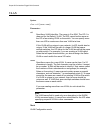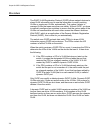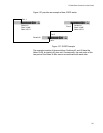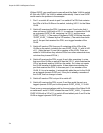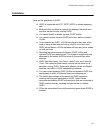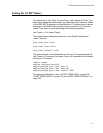
AT-9000 Switch Command Line User’s Guide
735
Guidelines
Here are the guidelines to GVRP:
GVRP is supported with STP, RSTP, MSTP or without spanning
tree.
Both ports that constitute a network link between the switch and
the other device must be running GVRP.
You cannot modify or delete dynamic GVRP VLANs.
You cannot remove dynamic GVRP ports from static or dynamic
VLANs.
To be detected by GVRP, a VLAN must have at least one active
node or have at least one port with a valid link to an end node.
GVRP cannot detect a VLAN that does not have any active nodes
or valid port links.
Resetting the switch erases all dynamic GVRP VLANs and
dynamic GVRP port assignments. The dynamic assignments are
relearned by the switch as PDUs arrive on the ports from other
switches.
GVRP has three timers: Join Timer, Leave Timer, and Leave All
Timer. The values for these timers must be set the same on all
switches running GVRP. Timers with different values on different
switches can result in GVRP compatibility problems.
You can convert dynamic GVRP VLANs and dynamic GVRP port
assignments to static VLANs and static port assignments.
The default port settings on the switch for GVRP are active,
meaning that the ports participate in GVRP. Allied Telesis
recommends disabling GVRP on those ports that are connected to
GVRP-inactive devices, meaning devices that do not feature
GVRP.
PDUs are transmitted from only those switch ports where GVRP is
enabled.




